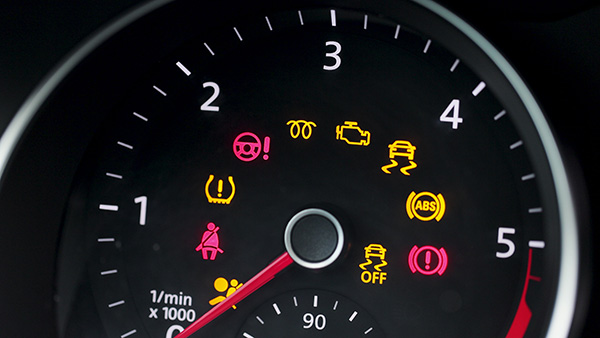
Seeing a warning light pop up on your dashboard can be unsettling, especially if you don’t know what it means. Some lights are minor alerts, while others signal serious issues that need immediate attention. Knowing what these lights indicate and how diagnostic tools can pinpoint the exact problem can save you time, money, and potential breakdowns.
Why Are Warning Lights Important
Your car’s warning lights are designed to communicate potential issues before they become major problems. Modern vehicles have onboard diagnostic systems that monitor everything from engine performance to emissions and safety features. When something goes wrong, the system triggers a dashboard light to alert the driver.
Ignoring these lights can lead to bigger, costlier repairs, so it’s essential to understand what each one means and how diagnostics can help identify the root cause.
Common Warning Lights and What They Mean
Check Engine Light
This is one of the most common (and dreaded) warning lights. It can indicate a range of issues, from a loose gas cap to a failing catalytic converter. If the light is steady, you should have your vehicle inspected soon. If it’s flashing, it means a more serious issue, and you should avoid driving until it’s checked.
Oil Pressure Warning Light
A red oil can symbol means your engine is low on oil or there’s a problem with oil circulation. Low oil pressure can lead to severe engine damage, so it’s important to check the oil level immediately and schedule a professional inspection.
Battery Light
If you see a battery icon on your dashboard, your charging system might be failing. This could be due to a bad alternator, a weak battery, or loose wiring. If ignored, your car may not start the next time you turn the key.
Brake Warning Light
This light can indicate low brake fluid, worn brake pads, or a larger issue with the braking system. If the light stays on, don’t take chances—brakes are critical for your safety, and getting them checked right away is essential.
Coolant Temperature Warning
Overheating can severely damage your engine. If this light comes on, it means your engine is running too hot. Pull over as soon as possible, let the engine cool down, and check the coolant level. Continuing to drive with an overheating engine can lead to a complete engine failure.
Tire Pressure Monitoring System (TPMS) Light
A horseshoe-shaped symbol with an exclamation mark means your tire pressure is too low or too high. Driving with improper tire pressure can cause poor fuel efficiency, uneven tire wear, and even blowouts.
How Diagnostics Help Identify Issues
When a warning light appears, modern vehicles store error codes in their computer system. A diagnostic scan reads these codes and helps pinpoint what’s causing the issue. This eliminates the guesswork and ensures a more accurate repair.
Diagnostics can reveal:
- Engine misfires
- Transmission issues
- Sensor failures
- Emission problems
- Electrical malfunctions
A professional diagnostic check saves time and prevents unnecessary repairs by identifying the exact problem.
Why You Shouldn’t Ignore Warning Lights
Some drivers continue to drive with a warning light on, hoping the issue will resolve itself. This can lead to expensive repairs or even breakdowns. For example, ignoring an oil pressure warning can result in engine failure, while neglecting a brake light could mean reduced stopping power.
Addressing problems early helps keep your car running efficiently and prevents costly damage.
If your warning lights have come on and you need reliable diagnostics in Warwick, RI, get your car checked before the issue gets worse.
Warning lights can be confusing, but our team can help. Elite Auto Repair in Warwick, RI, uses advanced diagnostics to pinpoint issues and provide the right solution. Don’t wait—schedule your check-up today!